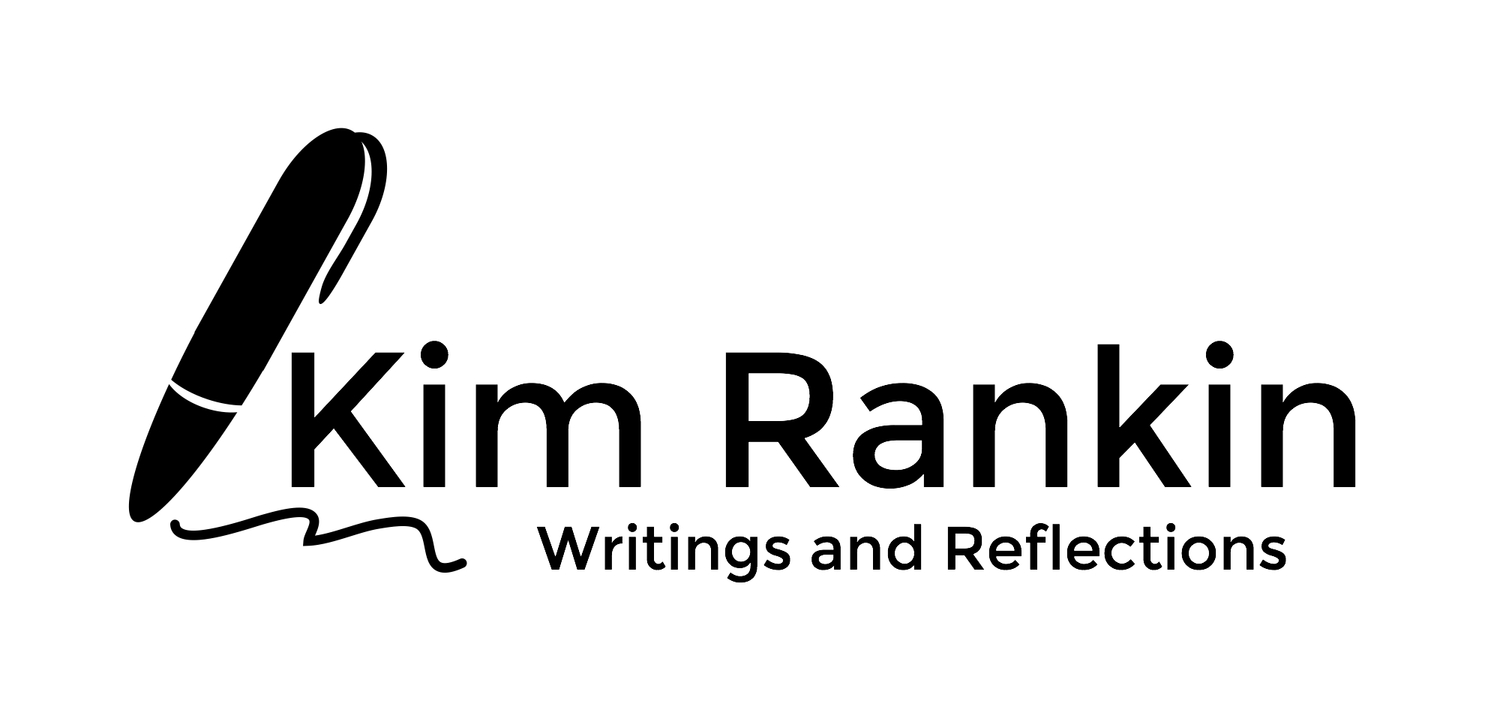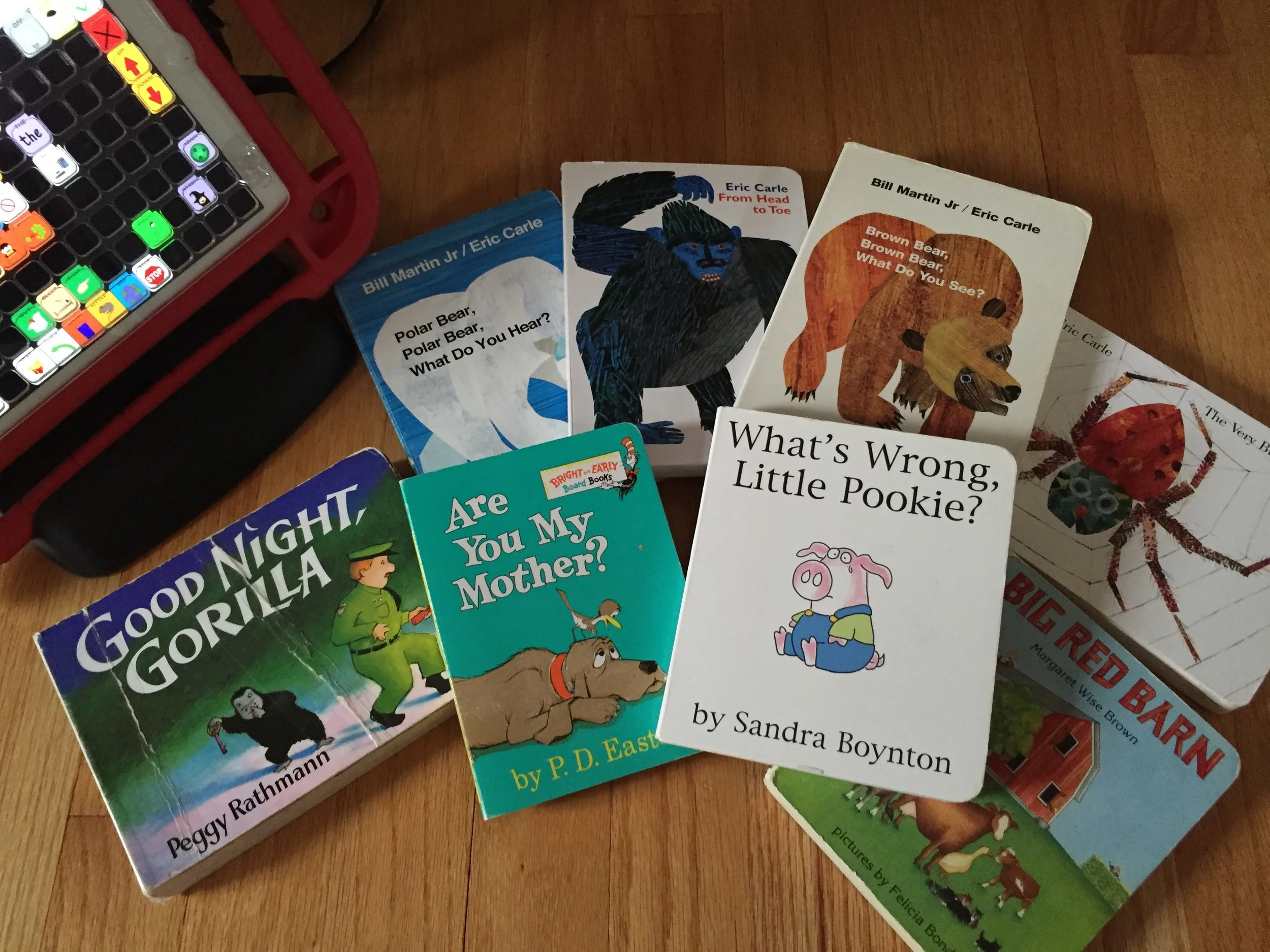Augmented Communication Part 7 - Combining Words, Current Goals, and Singing.
Rich and I are professionals at a consistent bedtime routine. I think we crave it as much as the children. It closes our day familiar and predictable. We share responsibilities; we know our roles. Nathaniel knows the schedule too. After bath and g-button care, trach ties, lotion, and pajamas, he is ready for stories. Then a short cuddle on a parent's lap in the rocking chair, and he crawls willingly into bed. Many nights, Rich shares these last moments of the day with Nathaniel, while I use the time to catch up on emails, prepare for the next day, or write. Last night, Nathaniel came into the living room between stories and getting in bed. Something new. He was carrying his talker. He said, "Night Night, Mommy," and offered a hug.
It has been about six months since I offered a review of Nathaniel communication growth and shared what we are working on. Nathaniel's new bedtime routine reminded me that I have much to write about.
If you are new to our following our story, Nathaniel's airway surgery in February made it anatomically impossible for him to speak. The surgeon put "glue" in his vocal cords and sealed them off from his lungs with a neck muscle. Frequently, I get emails from well meaning Facebook followers with links to news stories about vocal cord repair and transplants. Or people pat me on the back and try to encourage, "Someday they will figure out a way for him to speak." I do not know the future, but I know Nathaniel's airway surgeon, a pioneer in his field, has never reversed the surgery he preformed on Nathaniel. And while vocal cord movement was always in question, the real problem was aspiration. Until a solution is discovered to resolve Nathaniel's aspiration, it is not logical to open his airway. Lack of speech was the obvious outward symptom of his complex airway anatomy and function; it was not our only problem. So while airway surgery did not change our direction or focus with augmented communication; it did confirm the need to find lifelong alternative ways for Nathaniel to express himself.
First, an update on our tools. Last October I wrote that Nathaniel's dedicated device was an full size iPad Air, the app Speak for Yourself, and an iAdapter case with a built-in speaker. By December, it was clear that the case was too heavy. Nathaniel would not carry it. Added to the other medical equipment we carry constantly, adults even found it cumbersome. We changed to a Gripcase. We use the strap from the iAdapter case, attached to the new Gripcase with two office rings. We use a key guard from Lasered Pics Assistive Technologies, attached to the screen with four suction cups.
This set up has been fantastic for portability and accessibility, but not durability. A couple weeks ago we noticed the iPad screen is cracked. The keyguard has cracked in multiple places as well. My brother once compared computers to Rich's hammers. As a carpenter, Rich expects to break hammers. He has gone through many in his thirty-five year career. Nathaniel's device is like a hammer; it needs to always be available; it gets used constantly; it will break. Financially, this is a hard reality. We do not have a "repair the iPad" category in our monthly budget. Not yet anyway. There is a tendency to be cautious and safe and therefore reduce the risk of problems and cost. There is even a tendency to think that cautiousness reflects the good stewardship we are called to as Christians. We could use the heavier, more protective case. We could not let Nathaniel handle it. We could put it up when he is super active. But these choices would limit him, his access to words, and his communication. They would work in direct opposition of our current language goals. This is where our faith intersects our daily parenting practice. We know a God who promises to care for His children and provide what they need. Nathaniel needs words. So we select the device, case, and keyguard that collectively seems the most fitting, and we give it too him as a tool knowing it will likely break. Over and over again. We trust God to allow us to do the the same tomorrow, next week, next month... whenever a repair or replacement is needed. I mention all this because it shows in a small way how we can not separate our belief system from how we parent. Life is always a mix of belief and practice. The AAC practices in our home are supported or thwarted by our beliefs - our religious beliefs, our beliefs about Nathaniel, our beliefs about ourselves, our beliefs about money, our beliefs about how to spend our free time - this is yet another reason why augmented communication is not as easy or simple as learning to talk.
Enough of a tangent.
Besides continuing to open new words - there are around 550 words open on the talker now - the newest development in Nathaniel's communication is two words combinations. "Night-night Mommy," "want banana," "more Bob the Builder," "Mommy help," "Daddy work," "Ben bye bye"... are some of the combinations I hear regularly. He uses the talker. He uses sign. He code switches back and forth. Nathaniel's go to communication tactic is one word requesting. We can often encourage more words by asking, "Can you say that again with two words?" Occasionally, and with implementation of some of our focus areas described below, this sort of prompting can elicit a three word response like when he said, "I get cookie," last Friday evening. One of the hardest things I find about teaching Nathaniel to speak is finding the sweet spot between creating a little bit of frustration that is naturally motivating and too much frustration that stops communication.
We have a team that follows and directs Nathaniel's communication growth. A Speech Therapist sees him weekly. An Occupational Therapist with training in AAC sees him every other week to work on a variety of concerns, but always keeping communication as an important part of the session. Once a quarter both of these therapists meet together, along with a second speech therapist with a speciality in AAC, for a two hour session devoted solely to evaluation and goal setting. At our combined session in March we identified three goal areas: increase personal ownership of the talker, model agent/action combinations, and identify and drill five words weekly.
Increase Personal Ownership of the Talker
This one was hard for me. Nathaniel is only three. Sometimes he is struggling to run, play, and climb while carrying his g-tube feed on his back. As parents, we want him to enjoy being a little boy. We want to remove the weight, physical and in other ways, of his disability. We named his Facebook page Hold My Words! Clearly, we see part of our role is to help him carry his device. (By the way - the page was named for other reasons too, check out the About section to learn why.) But we also see the logic in Nathaniel gradually learning to take responsibility for his own communication tools. We are trying daily to make, "Get your words," the go-to response over picking the device up for him. We have found Modular Hose as a fantastic way to attach Nathaniel's words to his bike, high chair, and car seat. When the device is near him, the words are his rather than ours.
Model Agent/Action Combinations
This goal works on developing Nathaniel's syntax - how he arranges words and phrases to create sentences. "Bike go," is modeled when he says, "go." "Bird sing," is modeled when he signs, "bird." "I want down," is modeled with he says, "down." This supports our expectation that he speak more than one word requests.
Weekly Wall Words
Nathaniel has a lot of words open on his talker now. He has to know where words are located, and he has to tap the screen in different and specific sequences to access each word. January through March, Rich and I participated in the twelve week challenge hosted by Speak for Yourself to learn new words on Nathaniel's talker. We practiced daily, in a similar way that elementary students learn spelling words. We drilled. Combining this idea with vocabulary targets specific to Nathaniel, we are now identifying and drilling five words a week. Our speech therapist introduces the words with hands-on activities that reinforces word meaning. Nathaniel has a lot of support to find the words at the beginning of the week. We offer visual prompts of the word symbols on cards, an "in this area" wave over the talker, or a direct model of each word. Day by day, we drill our wall words, slowly reducing support as he learns the motor plan, or where to find, each word. By day seven, I am usually able to just verbally request a word, "Show me where MINE is on your talker... Now show me where GO is found..." These drills take less than five minutes. Like agent/action combination modeling, this has also been helpful in encouraging Nathaniel to use more language. We can now verbally prompt, "You need to use your wall word STOP instead of pushing the toothbrush away," or "Please try saying that again. Maybe use your wall word GET." We see Nathaniel using previous week's wall words in spontaneous utterances.
Singing and Signing
In addition to the work with our therapists, we have some family based augmented communication goals. We realized in January that Nathaniel's talker will probably not be the best option for participating in congregational singing, corporate prayers, or reciting our faith creeds at weekly church services or around our dinner table. Sign language seems much more appropriate in these settings. Rather than attend sign language classes or divert Nathaniel's therapy focus away from his communication app, we are learning one song, prayer or creed a month as a family. We frequently spend time in the evening, sign dictionaries spread out on our laps, learning new signs and practicing to music. This has been a source of great joy. And quite a few laughs. Our church's youth choir director learned of our endeavors and invited Rich and I to work with the youth choir for a few weeks. We taught the children our January song. The children sang and signed on Palm Sunday. Nathaniel sat in one of the first rows mesmerized; we cried. We are fortunate to have such amazing support for Nathaniel's needs from our church family. We look forward to Nathaniel participating in the choir. I wish I could share the video or photos of all the children, but due to privacy, I can only share the one at the top of this post. A repeated phrase in the song is "My God is Awesome." The boys, brothers, sweet friends to, and faithful prayer warriors for Nathaniel, are signing AWESOME in the photo. A fitting way to end this post. My God is awesome. In so many ways. Specifically today, I am thankful for ways He helps us understand and address Nathaniel's communication needs. He is awesome.











